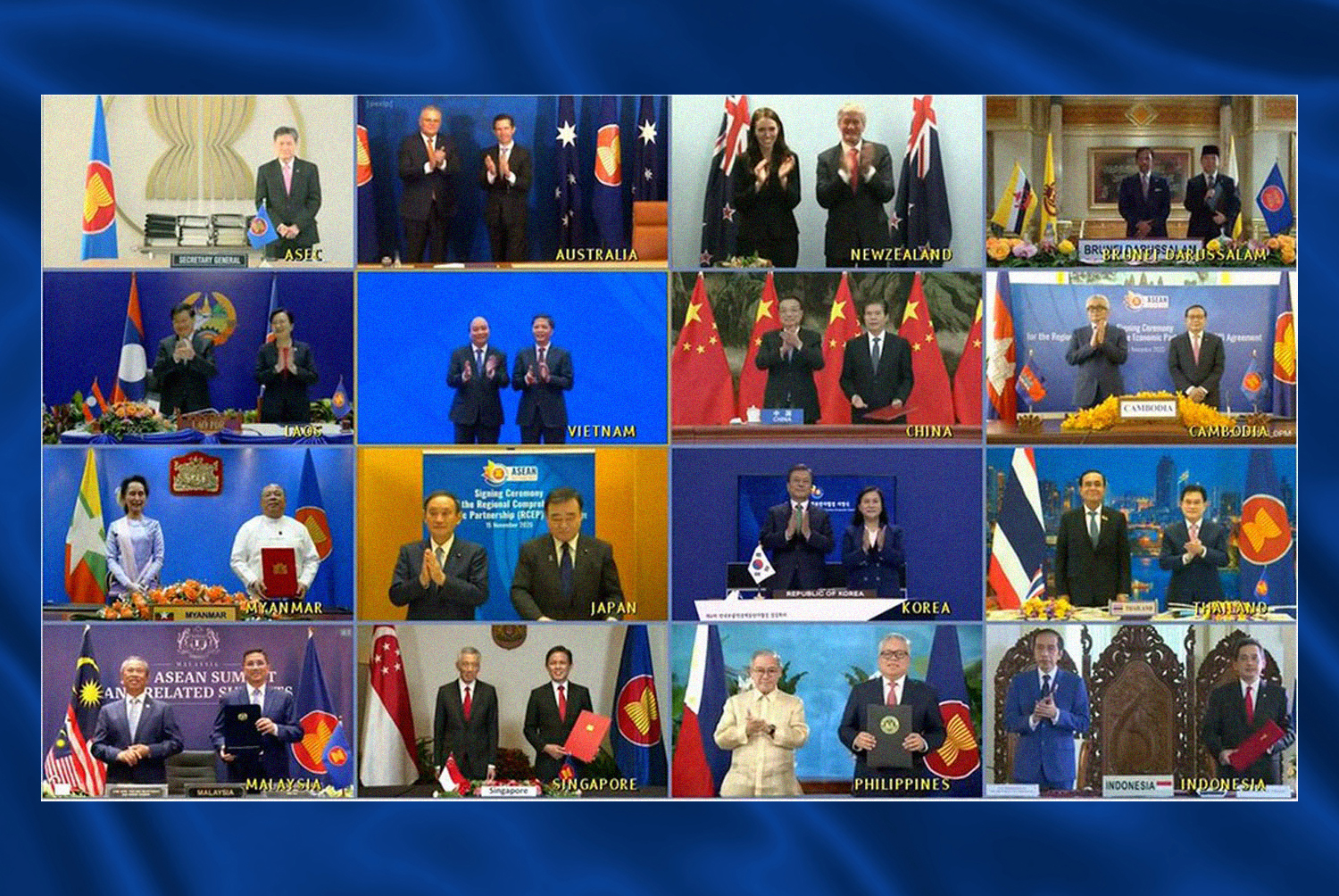
26 Nov Regional Comprehensive Economic Partnership – Asia-Pacific’s time to act is now
On November 15, 2020, 15 countries comprising members of the Association of Southeast Asian Nations (ASEAN) and five regional partners — signed the Regional Comprehensive Economic Partnership (RCEP), arguably the largest free trade agreement in history. RCEP and the Comprehensive and Progressive Agreement for Trans-Pacific Partnership (CPTPP), which concluded in 2018 and is also dominated by East Asian members, are the only major multilateral free trade agreements signed in the Trump era.
Economic Significance
RCEP will connect about 30% of the world’s people and output and, in the right political context, will generate significant gains. According to computer simulations, RCEP could add $209 billion annually to world incomes, and $500 billion to world trade by 2030.
It is also estimated that RCEP and CPTPP together will offset global losses from the U.S.-China trade war, although not for China and the United States. The new agreements will make the economies of North and Southeast Asia more efficient, linking their strengths in technology, manufacturing, agriculture, and natural resources.
Southeast Asia will benefit significantly from RCEP ($19 billion annually by 2030) but less so than Northeast Asia because it already has Free Trade Agreements (FTAs) with RCEP partners. But RCEP could improve access to Chinese Belt and Road Initiative (BRI) funds, enhancing gains from market access by strengthening transport, energy, and communications links. RCEP’s favorable rules of origin will also attract foreign investment.
To be sure, RCEP will help China strengthen its relations with neighbors, rewarding eight years of patient negotiations in the “ASEAN way,” which participants typically describe, with varying degrees of affection, as unusually slow, consensual, and flexible.
RCEP will also accelerate Northeast Asian economic integration. A spokesman for Japan’s Ministry of Foreign Affairs noted last year that negotiations on the trilateral China-South Korea-Japan free trade agreement, which has been stuck for many years, will become active “as soon as they are able to conclude the negotiation on RCEP.” As if on cue, in a high-profile speech in early November President Xi Jinping promised to “speed up negotiations on a China-EU investment treaty and a China-Japan-ROK [South Korea] free trade agreement.”
Content
The RCEP Agreement is comprehensive and comprises of 20 Chapters and includes many areas that were not previously covered in the ASEAN Plus One FTAs. The Agreement has specific provisions covering trade in goods, including rules of origin; customs procedures and trade facilitation; sanitary and phytosanitary measures; standards, technical regulations and conformity assessment procedures; and trade remedies. It also covers trade in services including specific provisions on financial services; telecommunication services; and professional services, as well as the temporary movement of natural persons. In addition, there are chapters on investment; intellectual property; electronic commerce; competition; small and medium enterprises (SMEs); economic and technical cooperation; government procurement; and legal and institutional areas including dispute settlement. In terms of market access, the RCEP Agreement achieves liberalisation in trade in goods and services and has extended coverage to investment.
Going Forward
It could be sometime before the participating nations see the benefits from the Agreement as six of the ASEAN nations and three non-ASEAN nations have to ratify it before it takes effect. This could be a slow process on account of pro-nationalist and anti-China sentiments in many participating countries. The 15 nations have left the door open for India, one of the original participating countries discussing the Agreement to enter at a later date. U.S. policies in Asia need to adjust to the changing realities of East Asia, recognizing the increased role of China, maturing ASEAN integration, and America’s diminished relative economic influence.
RCEP is now an added reason for the multinational companies not present in ASEAN or those who are present but have not scaled up their presence meaningfully, to have a relook at their plans for ASEAN. We are more than happy to discuss the impact of RCEP on each member countries. You can contact us on (+65) 9176-4136 or write to us on contact@bizasean.com for more details.
